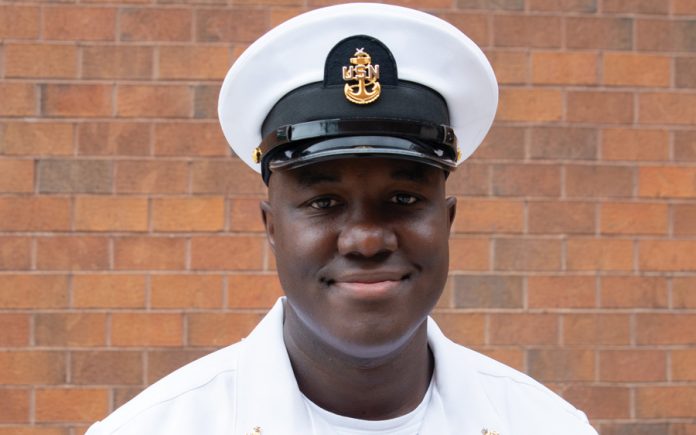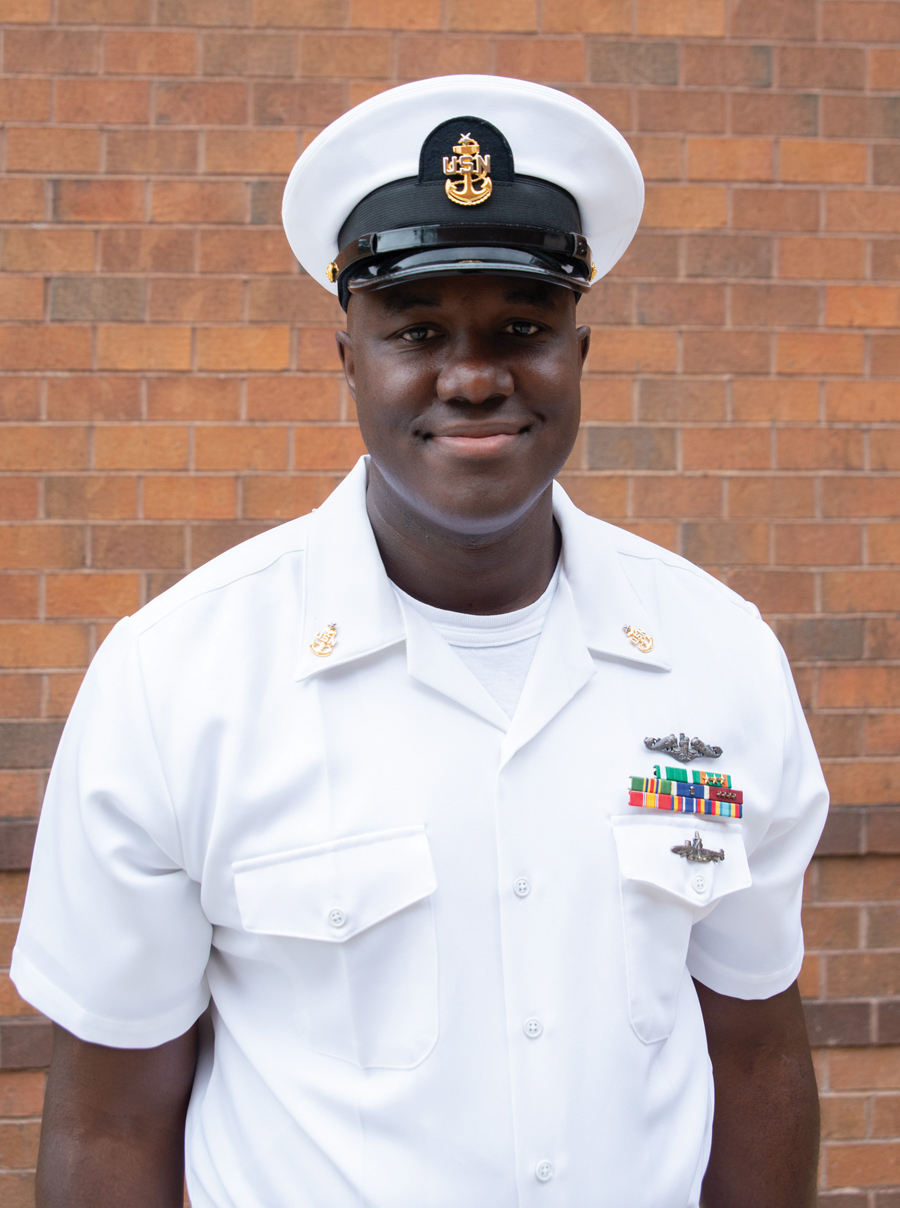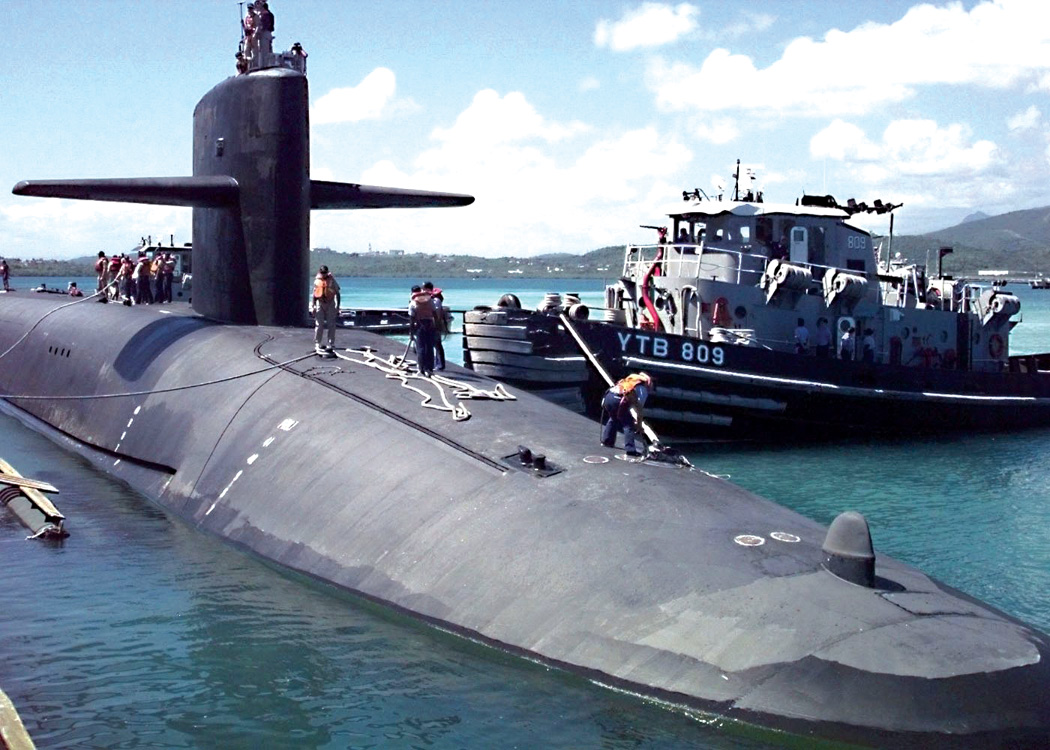

By Megan Brown, Navy Office of Community Outreach
Submariners make up only 10 percent of the U.S. Navy’s personnel, but they play a critical role in carrying out one of the Defense Department’s most important missions: strategic deterrence. Senior Chief Petty Officer Steven Dotson, a native of Oklahoma City, Oklahoma, is one of the sailors continuing a 123-year tradition of service under the sea to help ensure Americans’ safety.
Dotson joined the Navy 17 years ago and today serves as a missile technician aboard USS Maryland.
“I joined the Navy because I was unsure about college and I knew the military would help prepare me for life,” said Dotson.
Growing up in Oklahoma City, Dotson attended Frederick Douglas High School and graduated in 2005.
Skills and values similar to those found in Oklahoma City are similar to those required to succeed in the military.

“My hometown taught me to have a positive attitude and hard work ethic,” said Dotson.
These lessons have helped Dotson while serving in the Navy.
Known as America’s “Apex Predators!,” the Navy’s submarine force operates a large fleet of technically-advanced vessels. These submarines are capable of conducting rapid defensive and offensive operations around the world, in furtherance of U.S. national security.
There are three basic types of submarines: fast-attack submarines (SSN), ballistic-missile submarines (SSBN) and guided-missile submarines (SSGN).
Fast-attack submarines are designed to hunt down and destroy enemy submarines and surface ships; strike targets ashore with cruise missiles; carry and deliver Navy SEALs; conduct intelligence, surveillance, and reconnaissance missions; and engage in mine warfare. The Virginia-class SSN is the most advanced submarine in the world today. It combines stealth and payload capability to meet Combatant Commanders’ demands in this era of strategic competition.
The Navy’s ballistic-missile submarines, often referred to as “boomers,” serve as a strategic deterrent by providing an undetectable platform for submarine-launched ballistic missiles. SSBNs are designed specifically for stealth, extended patrols and the precise delivery of missiles. The Columbia-class SSBN will be the largest, most capable and most advanced submarine produced by the U.S. – replacing the current Ohio-class ballistic-missile submarines to ensure continuous sea-based strategic deterrence into the 2080s.
Guided-missile submarines provide the Navy with unprecedented strike and special operation mission capabilities from a stealthy, clandestine platform. Each SSGN is capable of carrying 154 Tomahawk cruise missiles, plus a complement of heavyweight torpedoes to be fired through four torpedo tubes.
“Our mission remains timeless – to provide our fellow citizens with nothing less than the very best Navy: fully combat ready at all times, focused on warfighting excellence, and committed to superior leadership at every single level,” said Adm. Mike Gilday, Chief of Naval Operations. “This is our calling. And I cannot imagine a calling more worthy.”
Strategic deterrence is the Nation’s ultimate insurance program, according to Navy officials. As a member of the submarine force, Dotson is part of a rich history of the U.S. Navy’s most versatile weapons platform, capable of taking the fight to the enemy in the defense of America and its allies.
Serving in the Navy means Dotson is part of a team that is taking on new importance in America’s focus on strengthening alliances, modernizing capabilities, increasing capacities and maintaining military readiness in support of the National Defense Strategy.
“The Navy provides a blanket of freedom for our citizens, one fabric at a time,” said Dotson.
With 90 percent of global commerce traveling by sea and access to the internet relying on the security of undersea fiber optic cables, Navy officials continue to emphasize that the prosperity of the United States is directly linked to trained sailors and a strong Navy.
Dotson and the sailors they serve with have many opportunities to achieve accomplishments during their military service.
“I am proud of making the rank of chief petty officer,” said Dotson. “A lot of individuals poured into me so I could have that achievement.”
As Dotson and other sailors continue to train and perform missions, they take pride in serving their country in the United States Navy.
“Serving in the Navy means I can provide for my family and thatI can serve my junior sailors,” added Dotson.













